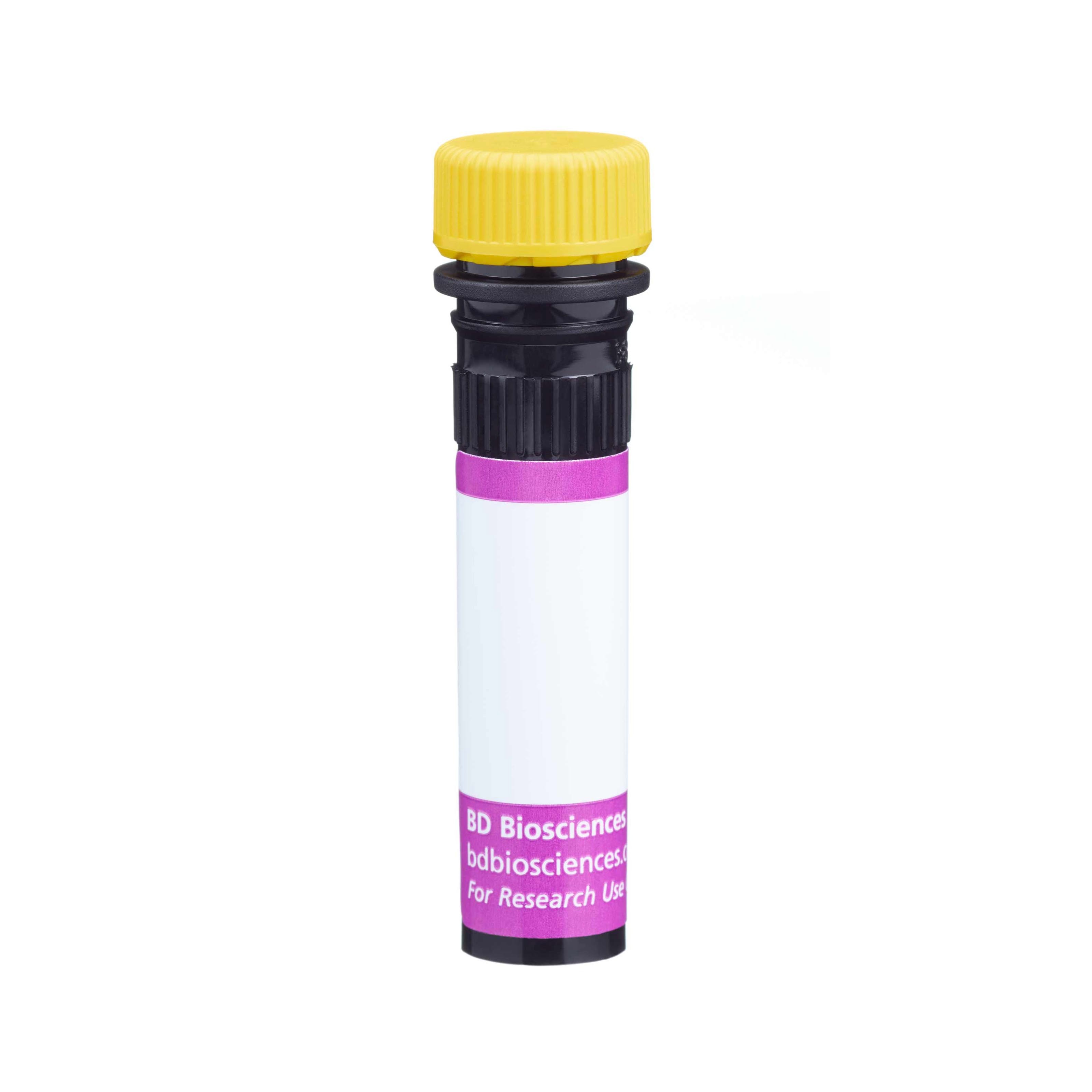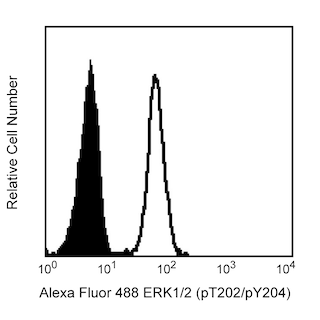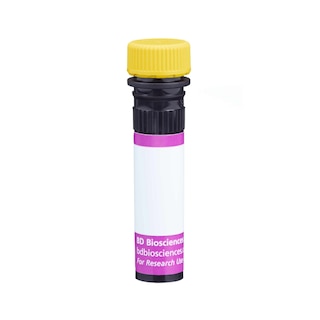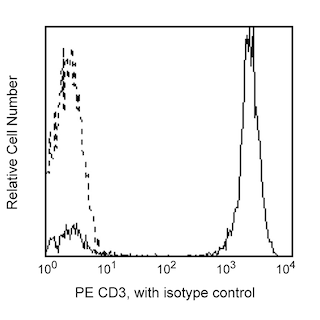-
Reagents
- Flow Cytometry Reagents
-
Western Blotting and Molecular Reagents
- Immunoassay Reagents
-
Single-Cell Multiomics Reagents
- BD® AbSeq Assay
- BD Rhapsody™ Accessory Kits
- BD® Single-Cell Multiplexing Kit
- BD Rhapsody™ Targeted mRNA Kits
- BD Rhapsody™ Whole Transcriptome Analysis (WTA) Amplification Kit
- BD Rhapsody™ TCR/BCR Profiling Assays for Human and Mouse
- BD® OMICS-Guard Sample Preservation Buffer
- BD Rhapsody™ ATAC-Seq Assays
-
Functional Assays
-
Microscopy and Imaging Reagents
-
Cell Preparation and Separation Reagents
-
Training
- Flow Cytometry Basic Training
-
Product-Based Training
- BD FACSDiscover™ S8 Cell Sorter Product Training
- Accuri C6 Plus Product-Based Training
- FACSAria Product Based Training
- FACSCanto Product-Based Training
- FACSLyric Product-Based Training
- FACSMelody Product-Based Training
- FACSymphony Product-Based Training
- HTS Product-Based Training
- LSRFortessa Product-Based Training
- Advanced Training
-
- BD® AbSeq Assay
- BD Rhapsody™ Accessory Kits
- BD® Single-Cell Multiplexing Kit
- BD Rhapsody™ Targeted mRNA Kits
- BD Rhapsody™ Whole Transcriptome Analysis (WTA) Amplification Kit
- BD Rhapsody™ TCR/BCR Profiling Assays for Human and Mouse
- BD® OMICS-Guard Sample Preservation Buffer
- BD Rhapsody™ ATAC-Seq Assays
-
- BD FACSDiscover™ S8 Cell Sorter Product Training
- Accuri C6 Plus Product-Based Training
- FACSAria Product Based Training
- FACSCanto Product-Based Training
- FACSLyric Product-Based Training
- FACSMelody Product-Based Training
- FACSymphony Product-Based Training
- HTS Product-Based Training
- LSRFortessa Product-Based Training
- United States (English)
-
Change country/language
Old Browser
This page has been recently translated and is available in French now.
Looks like you're visiting us from {countryName}.
Would you like to stay on the current country site or be switched to your country?




Two-color cytometric analysis of T-bet expression in human peripheral blood lymphocytes. Whole blood was treated with BD Phosflow™ Lyse/Fix Buffer (Cat. No. 558049) to lyse erythrocytes and fix leucocytes. The leucocytes were permeabilized by treatment with BD Phosflow™ Perm Buffer III (Cat. No. 558050). The cells were then stained with PE Mouse Anti-Human CD3 antibody (Cat. No. 555333/561808/561809) and either BD Horizon™ BV650 Mouse IgG1, κ Isotype Control (Cat. No. 563231; Left Panel) or BD Horizon BV650 Mouse Anti-T-bet antibody (Cat. No. 564142, Right Panel). Two-color flow cytometric contour plots showing the correlated expression of T-bet (or Ig isotype control staining) versus CD3 were derived from gated events with the forward and side light-scatter characteristics of intact lymphocytes. Flow cytometric analysis was performed using a BD™ LSR II Flow Cytometer System.


BD Horizon™ BV650 Mouse Anti-T-bet

Regulatory Status Legend
Any use of products other than the permitted use without the express written authorization of Becton, Dickinson and Company is strictly prohibited.
Preparation And Storage
Recommended Assay Procedures
BD™ CompBeads can be used as surrogates to assess fluorescence spillover (Compensation). When fluorochrome conjugated antibodies are bound to CompBeads, they have spectral properties very similar to cells. However, for some fluorochromes there can be small differences in spectral emissions compared to cells, resulting in spillover values that differ when compared to biological controls. It is strongly recommended that when using a reagent for the first time, users compare the spillover on cells and CompBead to ensure that BD Comp beads are appropriate for your specific cellular application.
For optimal and reproducible results, BD Horizon Brilliant Stain Buffer should be used anytime two or more BD Horizon Brilliant dyes are used in the same experiment. Fluorescent dye interactions may cause staining artifacts which may affect data interpretation. The BD Horizon Brilliant Stain Buffer was designed to minimize these interactions. More information can be found in the Technical Data Sheet of the BD Horizon Brilliant Stain Buffer (Cat. No. 563794/566349) or the BD Horizon Brilliant Stain Buffer Plus (Cat. No. 566385).
Product Notices
- This reagent has been pre-diluted for use at the recommended Volume per Test. We typically use 1 × 10^6 cells in a 100-µl experimental sample (a test).
- An isotype control should be used at the same concentration as the antibody of interest.
- Caution: Sodium azide yields highly toxic hydrazoic acid under acidic conditions. Dilute azide compounds in running water before discarding to avoid accumulation of potentially explosive deposits in plumbing.
- Source of all serum proteins is from USDA inspected abattoirs located in the United States.
- Species cross-reactivity detected in product development may not have been confirmed on every format and/or application.
- Alexa Fluor® is a registered trademark of Molecular Probes, Inc., Eugene, OR.
- For fluorochrome spectra and suitable instrument settings, please refer to our Multicolor Flow Cytometry web page at www.bdbiosciences.com/colors.
- BD Horizon Brilliant Violet 650 is covered by one or more of the following US patents: 8,110,673; 8,158,444; 8,227,187; 8,455,613; 8,575,303; 8,354,239.
- BD Horizon Brilliant Stain Buffer is covered by one or more of the following US patents: 8,110,673; 8,158,444; 8,575,303; 8,354,239.
- This product may be covered by US Patent No. 7,365,169.
- Limited Use License: The buyer (a) shall not sell or otherwise transfer this product to any third party, (b) shall use this product only for its internal, non-clinical research use, (c) shall not use this product for Commercial Purposes without a commercial license from Harvard (and if the buyer is interested in a commercial license, it should contact Harvard’s Office of Technology Development at 1350 Massachusetts Avenue, Holyoke Center, Suite 727, Cambridge, MA 02138, 617-495-3067), (d) shall use this product in compliance with all applicable laws and regulations, including, without limitation, applicable human health and animal welfare laws and regulations, (e) may transfer information or materials made through the use of this product to a scientific collaborator only if such transfer is not for any Commercial Purpose and such collaborator agrees in writing not to transfer such materials to any third party and to use such transferred materials and/or information solely for internal, non-clinical research and not for Commercial Purposes, (f) acknowledges that this product has not been approved for use in humans by the U.S. Food and Drug Administration or any other regulatory body and may not be used in humans and (g) shall indemnify, defend and hold harmless Becton Dickinson and Company and Harvard from and against all damages, losses, expenses (including reasonable attorneys’ fees), claims, demands, suits and other actions in any way arising from the buyer’s use, storage or disposal of this product.
- Please refer to http://regdocs.bd.com to access safety data sheets (SDS).
- Please refer to www.bdbiosciences.com/us/s/resources for technical protocols.
Companion Products






The O4-46 monoclonal antibody specifically binds to human and mouse T-bet. T-bet (T-box gene expressed in T cells) is a master regulatory transcription factor that is also known as TBX21 (T-box21) and TBLYM (T-box transcription factor, expressed in lymphocytes). Human (535 amino acids; 58.3 kDa predicted molecular mass) and mouse (530 amino acids; 57.7 kDa) T-bet proteins are encoded by the human TBX21 (chromosome 17) and mouse Tbx21 (chromosome 11) genes. The human and mouse T-bet protein amino acid sequences are 88% homologous. Human and mouse T-bet proteins share a highly conserved (98% homologous amino acid sequences) T-box protein domain that is centrally located and mediates binding to DNA. T-bet is expressed by and activates transcriptional activities within hemotopoietic cells including stem cells, NK and NKT cells and subsets of thymocytes, primed/activated CD4+ T cells, CD8+ T cells and γδ T cells, B cells, and dendritic cells. Interferon-gamma (IFN-γ), interleukin-27 (IL-27), and IL-12 act on peripheral antigen-triggered (TCR-signaling) T cells to increase T-bet expression. With respect to T helper lymphocytes, T-bet directs the differentiation of naïve CD4+ precursor T cells to become Th1-like effector and memory cells. T-bet accomplishes this by activating Th1 genetic programs (including epigenetic modifications) while repressing opposing T helper subset programs. T-bet controls the upregulated expression of the Th1 signature cytokine, IFN-γ, the IL-12Rβ2 subunit and the Runx3 transcription factor and can repress the function of other transcriptional regulators, such as GATA-3 (master regulator of Th2 development) and the expression of other cytokines including IL-2, IL-4 and IL-5.
The antibody was conjugated to BD Horizon BV650 which is part of the BD Horizon Brilliant™ Violet family of dyes. This dye is a tandem fluorochrome of BD Horizon BV421 with an Ex Max of 405-nm and an acceptor dye with an Em Max at 650-nm. BD Horizon BV650 can be excited by the violet laser and detected in a filter used to detect APC-like dyes (eg, 660/20-nm filter). Due to the excitation and emission characteristics of the acceptor dye, there will be spillover into the APC and Alexa Fluor® 700 detectors. However, the spillover can be corrected through compensation as with any other dye combination.

Development References (12)
-
Hibbert L, Pflanz S, De Waal Malefyt R, Kastelein RA. IL-27 and IFN-alpha signal via Stat1 and Stat3 and induce T-Bet and IL-12Rbeta2 in naive T cells. J Interferon Cytokine Res. 2003; 23(9):513-522. (Biology). View Reference
-
Hwang ES, Hong JH, Glimcher LH. IL-2 production in developing Th1 cells is regulated by heterodimerization of RelA and T-bet and requires T-bet serine residue 508. J Exp Med. 2005; 202(9):1289-1300. (Biology). View Reference
-
Hwang ES, Szabo SJ, Schwartzberg PL, Glimcher LH. T helper cell fate specified by kinase-mediated interaction of T-bet with GATA-3. Science. 2005; 307(5780):430-433. (Biology). View Reference
-
Iyer SS, Latner DR, Zilliox MJ, et al. Identification of novel markers for mouse CD4(+) T follicular helper cells. Eur J Immunol. 2013; 43(12):3219-3232. (Clone-specific: Flow cytometry). View Reference
-
Lugo-Villarino G, Maldonado-Lopez R, Possemato R, Penaranda C, Glimcher LH. T-bet is required for optimal production of IFN-gamma and antigen-specific T cell activation by dendritic cells. Proc Natl Acad Sci U S A. 2003; 100(13):7749-7754. (Biology). View Reference
-
McLane LM, Banerjee PP, Cosma GL, et al. Differential localization of T-bet and Eomes in CD8 T cell memory populations. J Immunol. 2013; 190(7):3207-3215. (Clone-specific: Fluorescence microscopy, Immunofluorescence). View Reference
-
Peng SL, Szabo SJ, Glimcher LH. T-bet regulates IgG class switching and pathogenic autoantibody production. Proc Natl Acad Sci U S A. 2002; 99(8):5545-5550. (Biology). View Reference
-
Peng SL. The T-box transcription factor T-bet in immunity and autoimmunity. Cell Mol Immunol. 2006; 3(2):87-95. (Biology). View Reference
-
Szabo SJ, Kim ST, Costa GL, Zhang X, Fathman CG, Glimcher LH. A novel transcription factor, T-bet, directs Th1 lineage commitment. Cell. 2000; 100(6):655-669. (Biology). View Reference
-
Takeda A, Hamano S, Yamanaka A, et al. Cutting edge: role of IL-27/WSX-1 signaling for induction of T-bet through activation of STAT1 during initial Th1 commitment. J Immunol. 2003; 170(10):4886-4890. (Biology). View Reference
-
Townsend MJ, Weinmann AS, Matsuda JL, et al. T-bet regulates the terminal maturation and homeostasis of NK and Valpha14i NKT cells. Immunity. 2004; 20(4):477-494. (Biology). View Reference
-
Zhang WX, Yang SY. Cloning and characterization of a new member of the T-box gene family. Genomics. 2000; 70(1):41-48. (Biology). View Reference
Please refer to Support Documents for Quality Certificates
Global - Refer to manufacturer's instructions for use and related User Manuals and Technical data sheets before using this products as described
Comparisons, where applicable, are made against older BD Technology, manual methods or are general performance claims. Comparisons are not made against non-BD technologies, unless otherwise noted.
For Research Use Only. Not for use in diagnostic or therapeutic procedures.
Report a Site Issue
This form is intended to help us improve our website experience. For other support, please visit our Contact Us page.